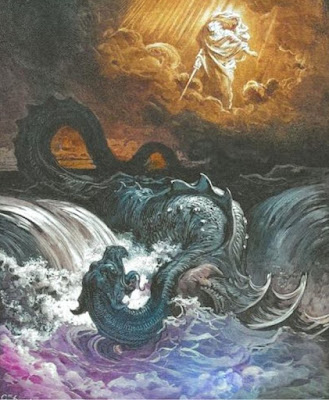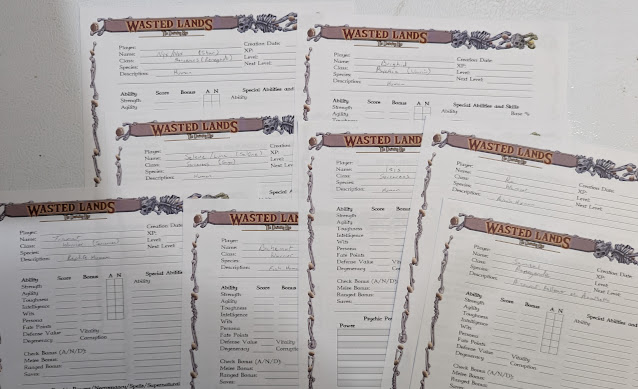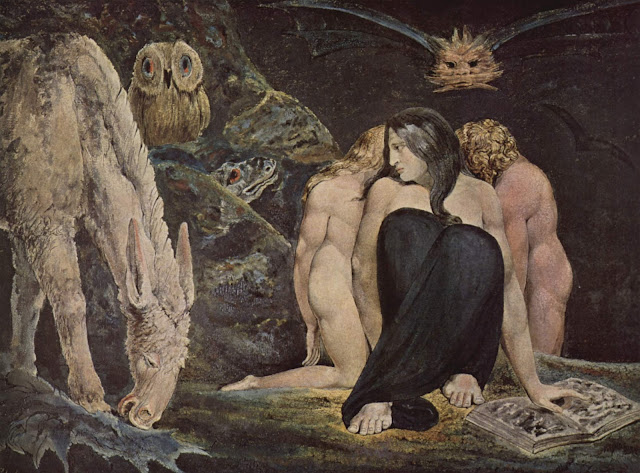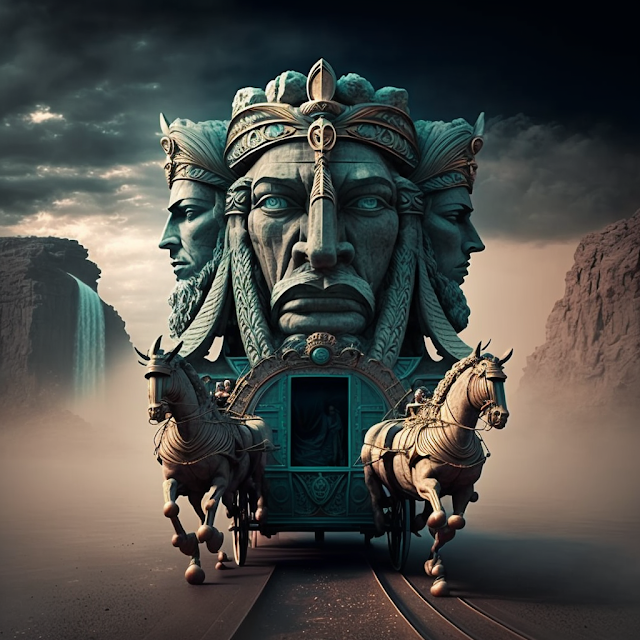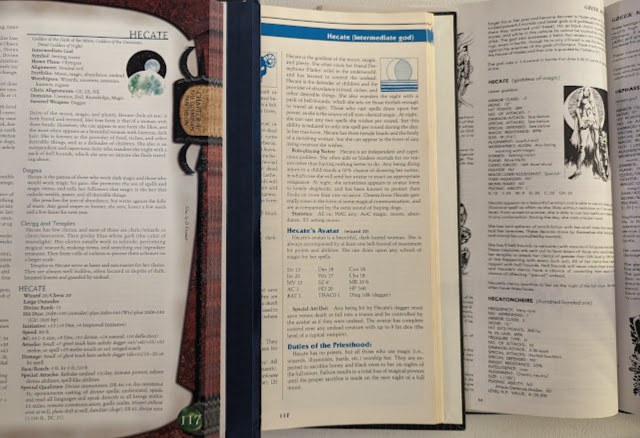These Goddesses cleave closer to their ancient roots than their Norse ones. In addition to Roman and Greek influences, these Goddesses can be traced back to their Mesopotamian antecedents, with Astartē, Ishtar, and even Isis as their inspiration. Primarily, this is due to the vital importance Spring has had throughout time to an agricultural society.
Ôstara
She is the goddess of spring, rebirth, and the dawn. She is the daughter of Mutter Natur and one of the gods that has retained her old name. Her title is "Geliebte," which means "beloved." She is celebrated on the Spring Equinox when she rises with the dawn to wake up the world from its long winter slumber. She goes to the underworld in the Fall and world weeps and sleeps, but not before her bounty is brought into the world in form of her harvests.
Ôstara is one of the overtly Pagan goddesses in this pantheon. She retains much of her earlier character and strongly aligns with Persephone/Proserpina in the Spring and Dionysus/Bacchus in the Autumn.
ÔSTARA (Goddess of Spring)Intermediate Goddess
ARMOR CLASS: 1 / -5
MOVE: 18" / 24"
HIT POINTS: 200
NO. OF ATTACKS: 2
DAMAGE/ATTACK: 1d10/1d10
SPECIAL ATTACKS: Radiance of Dawn
SPECIAL DEFENSES: Blinding Defense
MAGIC RESISTANCE: 50%
SIZE: M (5' 4")
ALIGNMENT: Neutral Good
WORSHIPER'S ALIGN: All (mostly Good)
SYMBOL: An egg or rabbit
PLANE: Himmel
CLERIC/DRUID: 15th level Druid
FIGHTER: Nil
MAGIC-USER/ILLUSIONIST: Nil
THIEF/ASSASSIN: Nil
MONK/BARD: 7th level Bard
WITCH/WARLOCK: 8th level Witch
PSIONIC ABILITY: II
S: 17 I:18 W: 18 D: 20 C: 20 CH:24
Ôstara is the Goddess of Spring and Rebirth. She is the maiden that heralds the dawn and new beginnings. She is a peaceful Goddess but terrible to her enemies. She always appears as a young woman wearing a garland of flowers and dressed in bright yellows and blues.
She can charm any animal as per the spell with no chance of saving throw, they will all do her bidding to defend her if she but asks, even to the death. Afterward, she will raise them back from the dead to perfect health and maximum hp. She can also raise dead on any mortal once per day.
She prefers not to attack, but if she is she can cast her Corona of Dawn once per day. This power blinds all within 100' of her and deals 6d6 fire damage to those within 30' of her. Any who make their saves take half damage. This power also acts as a shield, providing her with -5 AC. She can also strike with a beam of searing light for 1d10 points of damage twice per round.
While she would rather not attack any living creature, she has no such qualms against the undead or demons.
She is the wife of Jäger and sister to Liebhaberin. She is honored by druids and witches who look to the return of spring.
Ôstara grows the Golden Apples of Immortality. Her sister then will give them to gods or mortals of her own choosing.
Sphere of Control: Spring
Animal: Lambs, Rabbits
Rainment: (Head) Bare (Body) Simple white garments
Color(s): White, Green
Holy Days: Spring Equinox
Sacrifices: Burning incense and apples.
Place of Worship: Any open area, fields of grains
Liebhaberin
The goddess of love, beauty, and sexuality. Where Ôstara brings life back to the land, Liebhaberin brings it to young lovers. She is the ever-young, ever-beautiful goddess of spring. She is the morning star seen after the Spring Equinox. She has aspects of Aphrodite/Venus and aspects of both Freya and Iðunn. She, along with Ôstara, keeps the Golden Apples that keep the Gods forever young and immortal. No human (likely rendered "No Man") may eat of them. (To further confuse the myths here I am going to say that because of the "No Man" statement, a woman may eat of these apples and give them to a man. That's how they explain away Adam and Eve.)
Liebhaberin is also the patron goddess of all nymphs and dryads. Her retinue is occupied only by the most beautiful nymphs.
LIEBHABERIN (Goddess of Beauty, Love, and Sexuality)Intermediate God
ARMOR CLASS: 3
MOVE: 18"
HIT POINTS: 220
NO. OF ATTACKS: 1
DAMAGE/ATTACK: Emotional damage
SPECIAL ATTACKS: Charming
SPECIAL DEFENSES: Pact of the Beloved (see below)
MAGIC RESISTANCE: 50%
SIZE: M (5' 6")
ALIGNMENT: Chaotic Good
WORSHIPER'S ALIGN: All (mostly Good; lovers)
SYMBOL: The Morning Star
PLANE: Himmel
CLERIC/DRUID: 10th level Cleric
FIGHTER: Nil
MAGIC-USER/ILLUSIONIST: 4th level Illusionist
THIEF/ASSASSIN: Nil
MONK/BARD: 9th level Bard
WITCH/WARLOCK: 6th level Witch
PSIONIC ABILITY: II
S: 16 I:16 W: 18 D: 18 C: 20 CH:25
Liebhaberin is the Goddess of Beauty, Love, and Sexuality. She is the ever-young maiden. While her sister Ôstara stirs life back into the Earth and nature, she does the same for lovers.
She can appear as whatever the person viewing her most desires and can charm any mortal with no save.
Due to ancient pacts between the gods and all living things, no mortal or immortal that has ever been loved can bring her harm in any way. This includes direct attacks and even area-of-effect magics. Since everyone has been loved by someone at least at one point, this effectively makes her invulnerable. Undead, constructs, and mindless elementals are immune to this. Demons are also immune to this and are enraged by this.
Like her sister she is loathe to engage in violence. She can touch a person and they feel whatever emotion she chooses. Her tactic is often to calm an aggressor or make them fall in love with her or someone nearby. She can also cause jealousy and rage; a common tactic when she dealing with a number of hostile mortals.
She keeps the Golden Apples of Immortality, which are hers to give to whoever she pleases.
Many Gods, Goddesses, and mortals claim to be her lover, and this is all likely true, but she can't limit herself to just one lover.
Sphere of Control: Sex, love, beauty
Animal: Rabbit
Rainment: (Head) Bare (Body) Simple white garments or bare
Color(s): White, Red
Holy Days: Mornings, Weddings
Sacrifices: Libations
Place of Worship: Any area of natural beauty, the bedroom.
One Goddess or Two?
One of the crucial things to consider when making a new pantheon, even one with historical basis, is that gods are not compartmentalized easily. For example, Apollo is the God of music, archery, and the Sun. Pan is also the God of music. Hellios is also the God of the sun. This is because we are looking back at these myths through our times. Apollo rose and fell (but mostly rose) in importance over the centuries. This is even more true of the Egyptian myths. Gods rose, fell, were merged, split apart, and more.
What does this have to do with these two?
Simple, these two goddesses could have been one goddess. They could have been aspects of the same goddess. They could be sisters, mother and daughter, or something else. Gods can be a lot of things at the same time that mortals can't be. I had considered making them Divine Twins, but that role is being served elsewhere.
So, where does that leave me? Simple I go back to my rules. I follow what would work best for an AD&D game. I will keep them separate for now, but knowing full well, they could be combined into one goddess as time goes on.
I like my gods to be messy and have some unnecessary overlap.
Plane
Until I come up with something better, the Plane these Gods all live on is called Himmel, the German word for Heaven.
Where is Himmel? Well if you ask the worshipers, they will look at you strangely and point up. Beacuse where else would it be?
Consequently, the land of the dead and the place of evil is Hölle (Hell, but it also sounds like hole).
Where either of these is on the Great Wheel cosmology is anyone's guess. I am not sure yet myself. I *like* the great wheel, but I am not beholden to it. At least I don't think I need to be even if not using it violates my Rule #1.
Links
- One Man's God Special: Syncretism Part 3, the Roman-Norse Pantheon
- One Man's God series
- Deities & Demigods II: Part 1, Hecate (stat block construction)
- Monstrous Mondays: D&DGII The Monsters of the Black Forest Mythos
- My overview and rules for these postings
- Unser Vater, Father of the Gods




